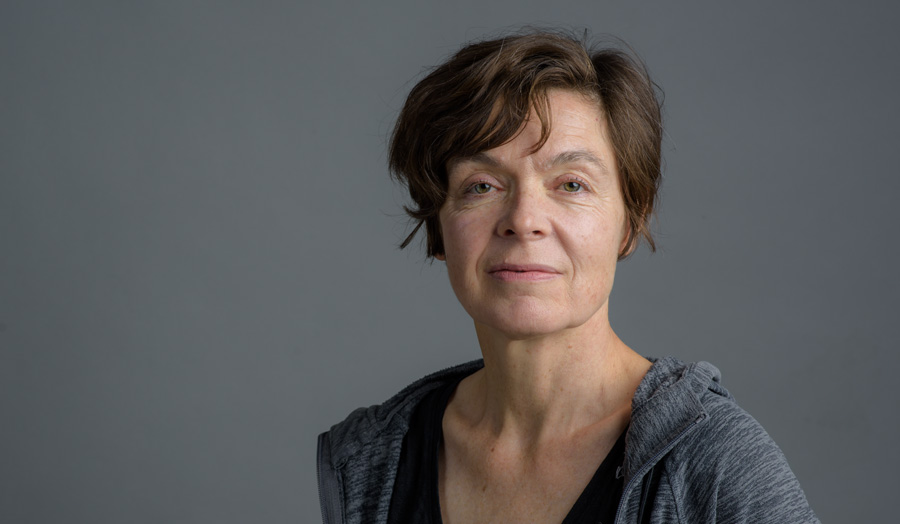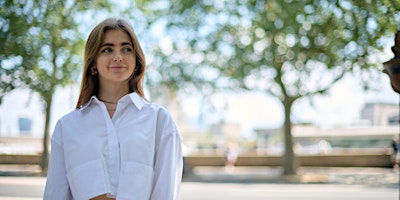Apply for this course
Please select when you would like to start:
If you're a UK applicant wanting to study full-time starting in September, you must apply via UCAS unless otherwise specified. If you're an international applicant wanting to study full-time, you can choose to apply via UCAS or directly to the University.
If you're applying for part-time study, you should apply directly to the University. If you require a Student visa, please be aware that you will not be able to study as a part-time student at undergraduate level.
Why study this course?
Our Games Animation, Modelling and Effects (including foundation year) BSc (Hons) degree has a built-in foundation year, designed to teach you the core skills you’ll need to succeed in the following three years of your course.
This four-year degree is ideal if you can't meet the entry requirements for a standard three-year degree. This degree will provide the first step towards starting your career in animation and effects within the gaming industry.
Excellent career prospects
Successful completion of the course will prepare artists for a range of positions from concept, technical, texture and VFX artist to character/model builder, animator and graphic designer
Course designed with industry professionals
Designed with computer games professionals, as well as games industry body TIGA, this innovative degree will enable artists to develop their computer graphics skills, both artistically and technically
Learn the skills you need to reach your full potential
This four-year degree course includes an intensive foundation year (Year 0) which will provide you with the skills required for your subsequent three years of study
Course modules
The modules listed below are for the academic year 2024/25 and represent the course modules at this time. Modules and module details (including, but not limited to, location and time) are subject to change over time.
Year* 0 modules
Year 1 modules
Year 2 modules
Year 3 modules
Critical & Contextual Studies: Foundation
This module currently runs:all year (September start) - Wednesday morning
(core, 30 credits)
The Critical and Contextual Studies module introduces a range of cultural and contextual practices and is diagnostic in helping students to identify areas of reading, writing, information gathering and research in relation to their abilities, needs and aspirations. The intention is to prepare students for critical and theoretical work in Higher Education.
The focus of the Critical and Contextual Studies module is on the ability to ask questions and find answers; specifically, those bearing on Art, Architecture and Design and Media in the broad sense and to the conventional means to present these. The experience of the module is structured by a sequence of three submissions: an initial patchwork assignment that includes a Learning Reflection element, an analysis of the works of a particular creative practitioner and a final submission is a self-directed essay.
The contents include answers to questions that range from practical or theoretical ‘how to’ or ‘what is’ exercises; to simple ‘what do you think?’ form of analysis or reflection; to complex structured responses in the form of the essay.
The module is constructed around two core blocks of intensive study. Each block has a thematic structure to allow the exploration of different topics and approaches, for example: ‘Contexts’, ‘Connections’, ‘Themes in creative practice’. The first assessment includes the Learning Reflection element.
The module aims to motivate and aid the student to find out about and engage in the practice and culture of Art, Architecture and Design and Media. The module should help inform the student about their future direction of study as well as providing useful insights into their potential and abilities. Students learn how to ask and begin to answer questions about the discipline they are interested in and its broader context. They should acquire a portfolio of methodological and critical writing and communication skills that enable them and know how to apply themselves to the various forms of study and assessment ahead following progression to the next level in Higher Education.
Read full detailsCritical Creative Practice
This module currently runs:all year (September start) - Wednesday afternoon
(core, 30 credits)
The module addresses what is fundamental to creative practices across all disciplines; colour, composition, the fabrication, discussion and development of ideas, visual narratives, collaborative practice, documentation, presentation, curation, critique and exhibition of creative work.
You will work in both digital and analogue formats to explore a range of materials, methods and presentation formats, e.g. sketchbooks, drawings, watercolour, photography, collage, AI and digital platforms.
The module aims to validate and build upon student’s existing creative practice. There is an emphasis on the process of learning from self-evaluation and critical reflection of intuitive making and testing. Throughout the module you will students work both individually and as part of a team to share, discuss and critique creative work in order to extend their capacity to confidently develop, articulate and presenting work. The module encourages peer-to-peer learning via teamwork and the required presentation of collaborative outcomes. The module aims to expand subject-area knowledge and introduce practical strategies for the formation and growth of student’s nascent creative practice.
Read full detailsProject
This module currently runs:all year (September start) - Friday morning
all year (September start) - Tuesday morning
all year (September start) - Thursday morning
all year (September start) - Monday morning
(core, 30 credits)
The Project module provides a broad, varied, stimulating experience of a range of creative practices that allows for self-assessment of individual interests and aptitudes towards developing a specialism. It enables the development of a productive, disciplined and critical approach to visual and practical enquiry; and to individual independent thinking, making and communicating. It develops the individual’s portfolio of work in a distinctive and ambitious way as evidence of a personal creative practice in the context of a specific subject area. Assignments and study trips will open up London as a source of limitless research potential and creativity.
A project develops ideas through conceptual and material processes towards outcomes that can be evaluated in relation to the initial idea; and other related contexts that may arise during the timeframe of the project. The Project module is an introduction to the project as a key feature of creative practice. The projects in the Project module vary considerably in aim, structure and duration to reflect their application in a wide range of creative practices. The definition, implementation, development and outcome of the projects is transferred from tutor to student as the course develops. The projects are inherently student-centred with course demands satisfied by nurturing the student’s independent inquiry, discovery & production.
Practical elements of project-work are built-up by a close relation with the Techniques module. Critical reflection and self-evaluation encourage the development of self-organisation and effective time-management.
Read full detailsTechniques
This module currently runs:all year (September start) - Friday afternoon
all year (September start) - Tuesday afternoon
all year (September start) - Thursday afternoon
all year (September start) - Monday afternoon
(core, 30 credits)
The Techniques module introduces a wide range of materials, methods, techniques and processes to produce work in a broad sense. It is closely aligned with the Project module to develop a working knowledge of the potential and limitations of selected media, materials and techniques in the development of project work. Responsible attitudes aligned to ethical and professional contexts are applied and considered in relation to imaginative experimentation and exploitation for innovation.
Techniques explores approaches to the skills-based, technical aspects of creative practice in relation having, developing and resolving ideas through processes towards media/material outcomes. It concerns the quality of making, considerations of care, appropriateness and endeavour. It encourages recognition of the intrinsic formal and structural qualities of different media as essential elements in visual/aural communication. The module involves a series of learning experiences that introduce and develop many of the key skills and techniques needed for a range of making practices across various subject areas; the outcomes are in the context of and further developed in close relation with the Project module.
The Techniques module links the analysis and evaluation of technical quantitative properties with qualitative aesthetic discernment and judgment and introduces a common vocabulary, technical/professional language, core skills and reference models.
It introduces safe and appropriate studio/workshop/site practice.
Read full details2D Computer Animation
This module currently runs:spring semester - Wednesday morning
(core, 15 credits)
The module introduces concepts, production methods, and techniques from the animation industry and related areas. The module introduces skills in foundational animation techniques including: script writing, concept art, character design, pose to pose animation, rigging for animation and lip-sync.
Concepts, techniques, and principles that enhance the design and production of linear narrative, character and environments are introduced, and students’ skills in these areas developed. Upon completion of this module students will be able to effectively represent character, emotion, movement and narrative.
Principles will be introduced through lectures, demonstrations and participative sessions with practical techniques explored in workshops.
Read full details3D Modelling and Texturing
This module currently runs:autumn semester - Thursday morning
(core, 15 credits)
This module is designed to give you a solid introduction to the underlying concepts and principles of Computer Graphics (CG) and images as well as some practical experience of applying relevant techniques and tools. You will be introduced to the 2D/3D computer graphics and images, production workflow, relevant documents (concept art, sketches, model sheets, etc), main modelling and texturing concepts and techniques, use and apply appropriate techniques and tools to produce an artefact and develop a communication style in the subject topic. No prior learning is required for this module.
The processes of modelling and texturing usually are interlinked and because of that optimizing the geometry will make changes to the texturing and vice versa. Therefore, this module will teach relevant techniques for matching (and optimizing) the geometry of the models, UV layouts, creating material/texture maps and mapping them on to the geometry models while keeping the number of textures needed to a minimum and at the same time without losing extra details that give a personality to (game) character or assets. Students will have to create relevant artefacts using an industry standard modelling/texturing package. The creation of models and textures for computer games is presented from the technical artist's perspective and demonstrates to the students the design, problem solving, and relevant workflow using appropriate techniques and tools.
Read full details3D Sculpting and Animation
This module currently runs:spring semester - Thursday morning
(core, 15 credits)
This module is designed to give you a solid theoretical background and the underlying concepts for advanced 3D Sculpting and Character Animation. The main focus is on character design and animation using the appropriate workflow, tools and techniques.
You will develop fundamental sculpting, rigging, and animation skills, and will also apply these to create a 3D game character, and learn relevant basic animations for a game (prototype).
You will learn how to make your character interactive in a 3D game environment and playback appropriate character animations based on user input.
Read full detailsDigital Imaging
This module currently runs:autumn semester - Thursday afternoon
(core, 15 credits)
This module will introduce image creation placing it within the wider context of graphic design and photography. The module will explore a range of photo composite approaches along with vector-based drawing techniques for inclusion in a digital portfolio. It will first develop the skills needed for creative image manipulation ranging from retouching of photographs to building complex multi-photo montages through image layering, masking and application of filters. The second phase of the module will then cover vector-based image creation with a bias for corporate branding and will consider where photo manipulation and vector-based imaging cross-over and diverge. Subjects common to both disciplines such as typography, colour trends and output formats will be put into context relative to industry requirements. These techniques will develop the student’s understanding of both theoretical and practical issues of the processes of image creation and manipulation. It will also give context as to why these techniques are relevant and how they are used in industry.
This core module aims to:
• Introduce visual imaging techniques.
• Introduce students to the potential of conveying ideas using images and graphics.
• Understand the moral and ethical issues of manipulating imagery.
• Create and manipulate images for a range of media formats.
• Develop vector-based designs with a consideration to corporate identities.
• Understand and apply the principles of corporate branding.
• Create a range of photo composite and vector-based material for a digital portfolio.
Digital Skills
This module currently runs:spring semester - Thursday afternoon
(core, 15 credits)
In this module, you will be introduced to the creative digital skills required for an undergraduate degree and career path in the creative industries, digital media, and journalism.
This digital literacy module provides an introduction to the software and practical skills required to produce a creative online presence and build a professional profile. You will be encouraged to develop your media practice utilising a range of tools and software packages. These skills in image production, for game and web design, desktop publishing and micro-blogging will be utilised in the development and presentation of CV's, promotional materials, posters, and flyers. The work you do on this module will be presented in a portfolio of digital practice and expertise, and you will additionally develop important skills in managing data and media assets in creative digital packages.
You will be introduced to key aspects and notions of employability. You will make use of these skills, knowledge, and understanding to plan and develop your career. You will reflect on your personal attributes, and examine the essential skills demanded of your favoured occupation. You will be encouraged to make use of these skills and knowledge to begin building your professional network and to formally and systematically consider your career development goals and strategies.
You will explore the ways in which digital media has transformed the nature of work and the development of careers. You will be encouraged to employ critical methods in the understanding of and analysis of digital media in the workplace context and explore opportunities for developing digital and media careers.
This module aims to:
• Equip you with the digital skills needed to prepare and present your work in the appropriate manner for your chosen field.
• Develop data and file management skills fundamental to the creative and media industries.
• Develop reflective practices by reviewing the needs of a design brief.
• Build confidence working with digital files, applying a range of document design and editing techniques.
• Allow you to better present your work for its intended audience.
Game Design
This module currently runs:autumn semester - Tuesday morning
(core, 15 credits)
This module provides an introduction to the topic of computer games from a variety of perspectives. It is designed to help students understand and appreciate many of the different technical and psychological approaches games designers and developers use in their work.
It will also facilitate the development of the skills needed when developing gaming applications using contemporary tools.
Students will work in teams on a range of game design challenges, creating and testing non-digital games in various media. They will engage with asset creation and simple scripting, to produce a web-based portfolio.
AIMS
- Provide an understanding of the complexity and potential of computer game design, including the technology required for developing responsive multimodal interactive systems.
- Develop creative and lateral thinking in response to a range of stimuli, with particular reference to game design.
- Develop communication and study skills.
- Offer opportunities for teamwork and professional development.
- Equip students for employment in the games industry, web and digital media industries.
Game Design and Development
This module currently runs:spring semester - Tuesday morning
(core, 15 credits)
This module facilitates the development of the skills needed by programmers and technical artists when developing gaming applications using contemporary tools.
Students will learn how to manage a workflow in order to create a casual game that runs on devices across multiple platforms, using a professional game engine. They will import their own assets, work in teams to troubleshoot challenges and test prototypes, and finally design and deliver a fully functional small game.
They will understand how to publish and promote mobile games, create engaging adverts and integrate basic principles of monetisation into projects.
AIMS
- Provide an understanding of the casual games market, including how to attract and retain players, manage advertising and interpret stats.
- Develop creativity and confidence in relation to tackling a playful brief.
- Develop technical skills around the use of a professional game engine, to showcase game assets and game play functionality.
- Offer opportunities for teamwork and professional development.
- Equip students for employment in the games industry, web and digital media industries.
Introduction to Drawing and Animation
This module currently runs:autumn semester - Wednesday morning
(core, 15 credits)
This module introduces concepts, production methods, and techniques from the animation industry and related areas. It provides an historical perspective, examining traditional animation craft skills as well as contemporary industrial practice. The module introduces skills in drawing, acting for animation, cell animation, and lens-based animation (Claymation, stop motion, pixilation).
Concepts, techniques, and methods that enhance the design and production of simple animations utilising the principles of animation, are developed. Upon completion of this module students will have enhanced their presentation skills and will have a good understanding of the Principles of Animation. They will furthermore apply these to effectively represent human and animal movement.
Principles will be introduced through lectures, demonstrations and participative sessions with practical techniques explored in workshops.
Read full details3D Texturing and VFX
(core, 15 credits)The module is designed to broaden your understanding up to the advanced level with the focus on creating various custom materials and visual effects (VFX) using industry standard authoring software tool(s). The creation of custom materials and VFX is presented from the technical artist’s perspective and demonstrates to you concepts of a variety of VFX, material design, problem solving, and relevant workflow using appropriate techniques and tools.
The aim of the module is to provide an advanced level of knowledge and understanding of the variety of VFX as well as entire VFX implementation workflow. It also aims to ensure you develop and are capable to apply advanced level skills, tools and techniques necessary for creating realistic (or according to the project requirement specification) custom materials and VFX to enhance 3D scene.
This module aims to:
- enable you to understand the concept and principles of advanced material authoring and VFX;
- gain a knowledge, develop skills to design and implement VFX used in the rendered animation;
- demonstrate the knowledge and skills to use and integrate different tools to design and develop creative materials and VFX to 3D scenes for variety of contexts and applications (including 3D characters and assets for computer games).
- develop communication skills with particular reference to VFX;
- equip you for employment in the CG, games, web and multimedia, design and publishing industries.
The module also aims to help you to continue development of a personal portfolio by adding material authoring and VFX work that demonstrates understanding of the key principles and capability to create special (visual) effects to emphasize a complete and fully rendered 3D scene with custom materials.
Advanced 3D Animation
(core, 15 credits)In this module you will be introduced to advanced techniques and will have to develop more advanced skills by creating much more complex variety of 3D character animations and behaviours (for example, interaction with or manipulating other game assets in the scene and relevant animation of character’s facial expressions while manipulating/interacting with an object). You will have to apply the theoretical concepts, creativity, skills and techniques to build more advanced 3D character animations for various applications (video clips, games, commercials, movies).
You will develop advanced modelling, texturing, rigging, animation and VFX skills and also apply these to create various 3D game assets, character(s), and relevant basic animations for a game (prototype).
As a BSc GAME course student, you will have a teamwork element with BSc GP course students.
Prior knowledge and skills: This module requires a successful completion of Level 4, i.e. basic knowledge and practical skills of the 2D/3D modelling and animation.
The module also aims to help you to continue development of a personal portfolio by adding a 3D work that demonstrates understanding of the key principles and capability to create complete and fully rendered 3D game assets, VFX and characters.
Advanced 3D Modelling
(core, 15 credits)In the first part of the module, you will be introduced to the main concepts and techniques used to design, model, and implement game assets in a team environment. You will be using high-end modelling and animation industry standard software tools.
The aim of the module is to provide an advanced level of knowledge and understanding as well as ensure you develop advanced level skills necessary throughout the entire 3D game assets and character implementation workflow (concepts, design, techniques for 3D game assets and character modelling, texturing, rigging, animation, and rendering). It also aims for you to develop and apply relevant practical skills, tools and techniques as well as get experience in successful 3D game assets and character project implementation according to the requirements of the game quality in a variety of contexts and applications.
This module aims to:
- enable you to understand more advanced workflow for 3D game assets and/or characters;
- implement the production workflow of 3D game assets and/or characters output from a relevant industry standard tool(s);
- develop communication skills with particular reference to 3D game assets and character development.
- equip you for employment in the CG, games, web and multimedia, design and publishing industries.
The module also aims to help you to continue development of a personal portfolio by adding a 3D work that demonstrates understanding of the key principles and capability to create a complete and fully rendered 3D game assets and characters.
Anatomy and Character VFX
(core, 15 credits)In order to enable you to produce a professional level character design, this module will cover the study of human anatomy.
General proportion of the human figure.
Torso anatomy.
Upper limbs anatomy.
Lower limbs anatomy.
Facial proportions and key muscular structure.
Additionally, you will receive an introduction to animal anatomy via observation of similarities and differences between animal anatomy and human anatomy.
You will learn the difference between an exoskeleton and an endoskeleton.
The module will prepare you to use and integrate different tools to create realistic 3D models and textures for variety of contexts and applications (including 3D characters and assets for computer games).
In this module you will also gain experience in the workflow of industry standard cloth authoring software; additionally, you will learn to texture and apply the results to your character and/or environmental props.
Finally you will learn how to implement character VFX such as cloth and hair simulation and animation for a game workflow as well as for a movie workflow.
The module also aims to help you to continue development of a personal portfolio by adding a 3D work that demonstrates understanding of the key principles and capability to create a complete and fully rendered 3D character.
Motion Graphics Design
(core, 15 credits)This module provides students with the opportunity to explore the burgeoning field of Motion Graphics that exists at the intersection between photography, graphics, design, animation, and visual communication.
Students will further develop their foundational visual design skills by exploring camera work: optics and movements, lens-based versus software-based techniques. Utilising industry-standard software students will develop narrative solutions to client briefs
Sound Design for Games
(core, 15 credits)In this module you will gain a strong understanding of the impact of audio for games, combined with attaining the skills needed to develop audio assets and implement them in industry standard middleware.
You will be introduced to an overview of audio post-production theory, practice, and technologies, including their uses and applications.
This module will give you the opportunity to experience real-world working practices, by working in small production groups, collaboratively towards common goals.
The module will put you in the role of a Sound Designer, wherein you will design and experiment with aspects of sound including recording, synthesis, and effects, so that when combined, you are able to generate a unique auditory experience.
You will have the freedom to explore and develop individual ideas in the context of sound for game genres of your choosing, resulting in the production of a project that displays creative expression, as well as technical achievement.
Using effective sound design techniques and openly collaborating with your peers and game developers, you will have the opportunity to create unique soundscapes, effects, and textures, all geared towards implementation.
This in turn will form a piece of practical work, for your show-reel, which can be used for future promotion and collaboration within the gaming industry.
This module aims to:
• Enable you to capture, manipulate, and produce game audio.
• Explore middleware/DAW implementation.
• Enhance creative sound design techniques.
• Understand the role of music for gaming.
• Develop recording studio, mixing and production skills.
• Apply core concepts and techniques relating to sound design and music.
VFX
(core, 15 credits)This module provides students with the opportunity to explore the field of VFX. VFX work involves the digital manipulation of images to enhance, augment or replace elements of live-action shot in film with digital assets, such as animated 3D models. Combining aesthetic awareness and knowledge with sophisticated technical skills, students will develop their VFX design understanding, working from concept and pre-visualisation development through to live action video capture and digital asset creation and compositing and exporting their work for presentation. Students will explore techniques for compositing optically shot and computer-generated material and gain an understanding of camera work: optics and movements, together with lens-based versus software-based techniques. Utilising industry-standard software students will develop narrative solutions to client briefs.
Virtual Reality Game Development
(core, 15 credits)You will work in teams of artists and programmers to design and develop a playful VR experience using an industry standard game engine and industry standard VR headset (hardware).
The module fosters critical thinking by addressing challenges in VR game design and encourages teamwork through collaborative project development. Emphasis is placed on staying current with industry trends and emerging technologies, fostering a culture of innovation.
Aim
The aim of this module is to provide students with a comprehensive understanding of the principles, technologies, and development practices related to virtual reality in the context of game development. They will learn what makes a VR game. This module can provide students with a well-rounded education in virtual reality game development, preparing them for careers in the rapidly evolving field of immersive technologies.
Creative Practice Dissertation Project
(core, 15 credits)This module allows students to put into practice their research and project planning, based on learnings from the Autumn semester research module. They will develop a final project that encapsulates the learnings and aspirations from previous years of their course.
The project module should encase their own investigations and interests while targeting a specific audience defined in advance. The final output will happen in coordination with their course supervisor and will be course-specific.
This module allows students to demonstrate academic and/or professional skills compatible with their level of study as the project stimulates experimentation and innovation as part of their preparation for future academic or professional life.
The module aims to:
• deliver and plan a professional-level project in their area.
• help students choose areas of interest or affinity in their professional practice.
• enhance writing, research, pitching skills, as well as the development of specific artefacts specific to their course.
• equip students with the skills necessary to produce an independent body of work relating to their discipline that can enhance their employability by showcasing an independent body of work.
• prepare students for future independent practice.
Creative Research Dissertation Project
(core, 15 credits)This module allows students to develop research and project planning that encapsulates learnings and aspirations developed throughout their course. It is expected that students can demonstrate a range of skills and techniques acquired during previous years. The project module should encase their own investigations and interests while targeting a specific audience defined in advance. This module allows students to demonstrate academic and/or professional skills compatible with their level of study as the project stimulates experimentation and innovation as part of their preparation for future academic or professional life.
The module aims to:
• develop skills of planning, research, and delivery of a professional-level project in their area.
• help students choosing areas of interest or affinity in their professional practice.
• enhance writing, research, and pitching skills.
• equip students with the skills necessary to produce an independent body of work relating to their discipline
• prepare students for future independent practice.
Game Assets and VFX
(core, 15 credits)In this module you will work in a team with other game art students and games programming students in order to design a game and implement a working game based on your design; you will continue developing your game ideas and take them from the prototype stage all the way to completion.
In this module, you will further develop your knowledge and understanding of game development processes such as:
QA - evaluation techniques, the importance of playtesting.
Work to professional standards with focus to marketing and publicity.
Learn to implement advanced techniques such as designing vehicles and vehicles rigging.
Advanced environmental VFX such as snow, rain and materials that modify the environment assets based on the weather system.
Fracture and Destruction VFX, Advanced Materials to push your artwork to the next level.
Games Assets Development
(core, 15 credits)This module is designed to give you the responsibility for working together as a large team, in order to design and build a video game prototype.
You will work in smaller sub-teams focusing on design and asset production.
The module provides you with the opportunity to advance their knowledge in a variety of disciplines related to their chosen sphere of expertise such as:
Game Characters.
Game Prop Design.
Procedural generation of content.
Procedural Generation of environments.
Integrated Fluid VFX.
You will be expected to develop professional quality work to a specialist brief.
This module aims to:
- enable you to understand workflow models, styles of project management and the necessity of good communication skills in a team-based work environment
- implement art and design capabilities in the area of computer games and digital media
- develop communication skills with particular reference to computer games and digital media
- equip you for employment in the area of computer games and digital media.
Portfolio Creation
(core, 30 credits)In this module you will focus on completing the portfolio piece you have researched, designed and started creating in the Portfolio Research, Design and Social Media module. You will focus on advancing and improving CGI skills within your chosen specialization.
Assessment will consist of one coursework assignment.
The module aims to enable you to develop the relevant skills required by a technical artist:
- Demonstrate a solid grasp of the concept and principles of advanced lighting, rendering and compositing for presentation
- Enable you to understand different CGI workflows
- Equip you with knowledge and skills relevant to your chosen specialisation within the 3D Games pipeline
- Develop communication skills relevant to advanced CGI and professional portfolios
- Create social media profiles to present your portfolio
Portfolio Research, Design and Social Media
(core, 15 credits)In this module you will work through set tasks designed for you to understand and develop your specialisation within the 3D games pipeline to produce a professional portfolio. You will research the industry and what a portfolio within your chosen specialisation should contain. You will gain the knowledge of professional techniques to present your 3D work and practice using Marmoset Toolbag 4.
Assessment will consist of one coursework assignment.
The module aims to enable you to develop the relevant skills required by a technical artist:
- Demonstrate a solid grasp of the concept and principles of advanced lighting, rendering and compositing for presentation
- Enable you to understand different CGI workflows
- Equip you with knowledge and skills relevant to your chosen specialisation within the 3D Games pipeline
- Develop communication skills relevant to advanced CGI and professional portfolios
- Gain the necessary knowledge for employment in Games, Animation, VFX, Advertisement, Design and various other CGI related industries.
- Create social media profiles to present your portfolio
Documentary Filmmaking
(option, 15 credits)You will develop professional practices by working in small groups to produce a short documentary. The module will give an overview of the commissioning process and will include input from industry professionals.
You will be required to research, pitch, and develop a documentary proposal following industry guidelines and legal frameworks.
There will be an emphasis on how to film and work with documentary subjects (or characters) in an ethical way.
You will learn about a range of documentary modes, genres and techniques via screenings, discussion, and practice. Key figures and films will be explored as well as emerging styles and formats.
The module aims to:
• Provide students with an overview of approaches to documentary filmmaking.
• Give students practical experience of a range of documentary techniques such as sit-down interviews, vox pops and observational filming.
• Develop students’ understanding of how to research, develop and present a concept for a documentary for film or TV.
• Enable students to shoot, structure and edit a short documentary using appropriate audio and camera equipment and editing software.
Media Industry Careers
(option, 15 credits)This module represents core self-development activities: career planning, promotion of student work, and portfolio. It provides practical guidance for students in how to position themselves and their work with reference to their career goals and builds on student work in Level 5 Media Industry Roles module on personal promotional activity.
The module will include analysis of current trends and the changing media landscape, with a focus on diversity and representation across the industries, as well as encouraging engagement with local film and media organisations and activities.
Student research will inform the development of a career plan and the design of the portfolio of work (including show reel where relevant). Students will design the presentation of their work to prospective employers or funders in various formats including: CV, covering letter, website – format to be determined through the student’s research.
This module aims:
• to afford students the opportunity to realise the career-potential of their accumulated skills, subject knowledge and understanding. The skills will include identifying and researching career opportunities, mapping the requirements and benefits of the career against their own skills and motivations and then learning about and producing the evidence that will enable them to exploit that opportunity.
• to increase students’ understanding of the interrelationship between their practice and the contexts of their profession in the creative economy, and ‘market’ for their skills.
• to empower, enabling the graduate to exploit capacity and potential to shape the job and their professional field so that they may both contribute to and create social benefit from their career.
Queer Media, Culture and Politics
(option, 15 credits)Queer Media, Culture, and Politics (QMCP) is a module that connects media pieces, cultural moments and political movements that have empowered lesbians, gays, trans, intersex, asexual, and other gender-fluid actors (henceforth, queer, LGBTQIA+) over time. The module aims to provide students with historical, political, and conceptual accounts to interpret the complexity of queer media in contemporaneity. The term “media” channels many styles of queer authorship within contexts, languages, and practices worldwide. Queer media encompasses different genres and formats, from literature to cinema, from visual arts to digital media.
The module aims to:
1. reassess the importance of past artists, movements, and political actors who have engaged with topics related to sexual and gender diversity, oppression, and liberation.
2. promote a well-informed, critical reading of contemporary forms of queer expression in the media.
3. increase the knowledge and repertoire about relevant queer artists and performers both in the West and in the Global South.
4. pave the understanding of queer culture as a pivotal event to promote societal awareness of LGBTQIA+ rights over the last decades.
5. understand the recent globalization and commodification of queer culture and propose alternatives.





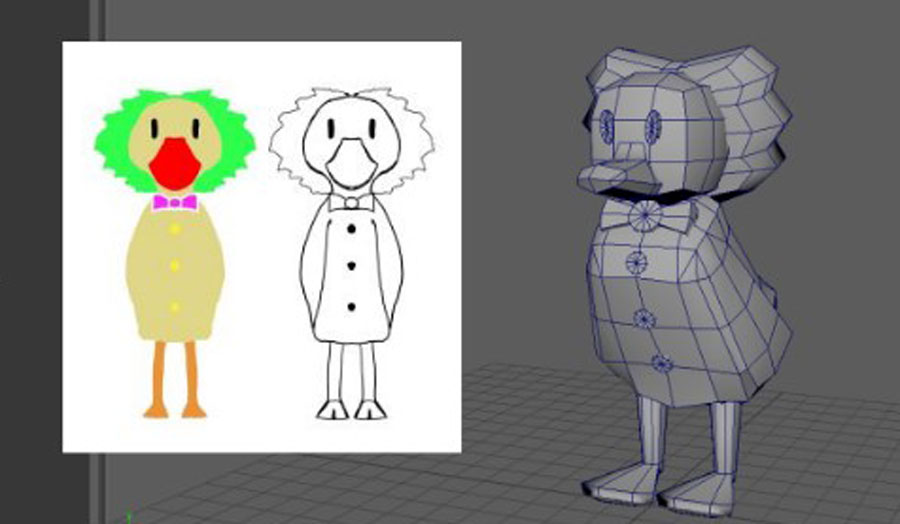

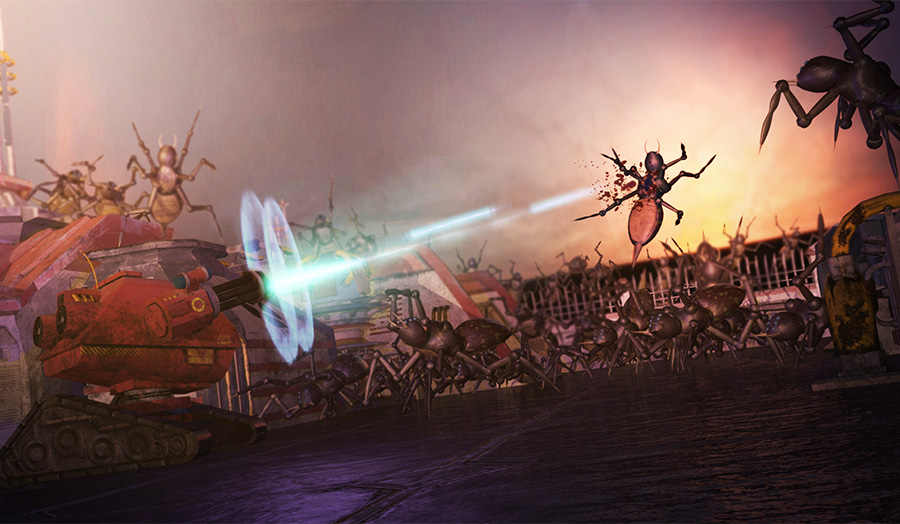
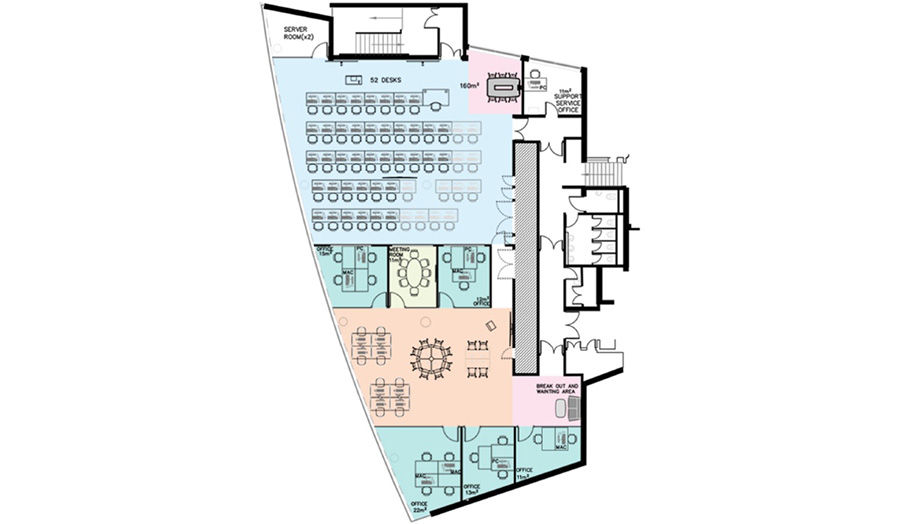

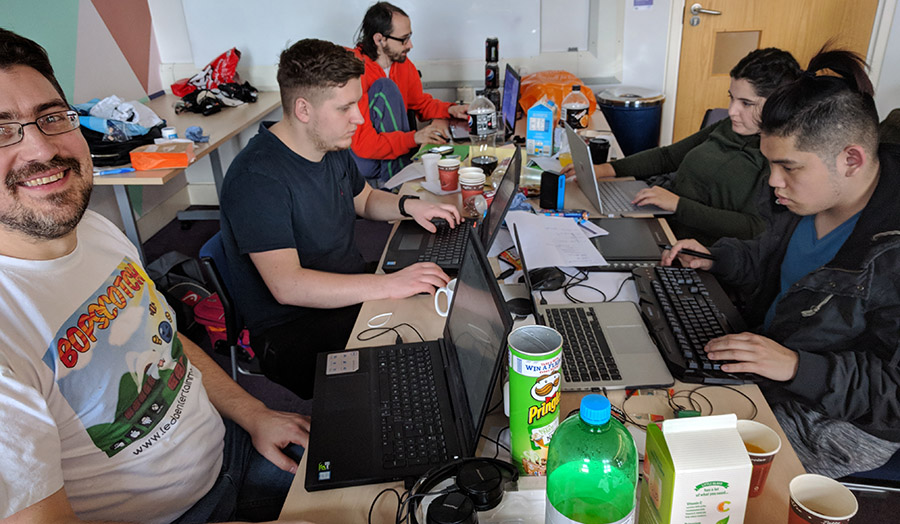
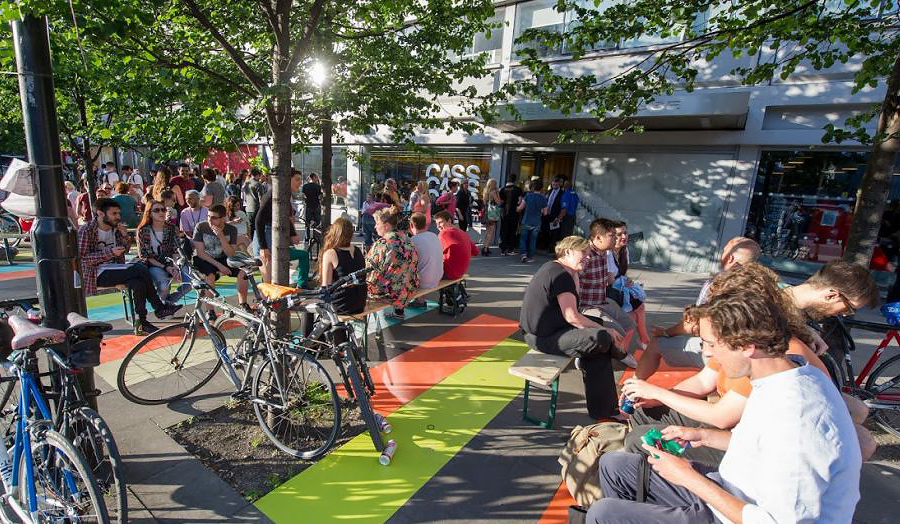
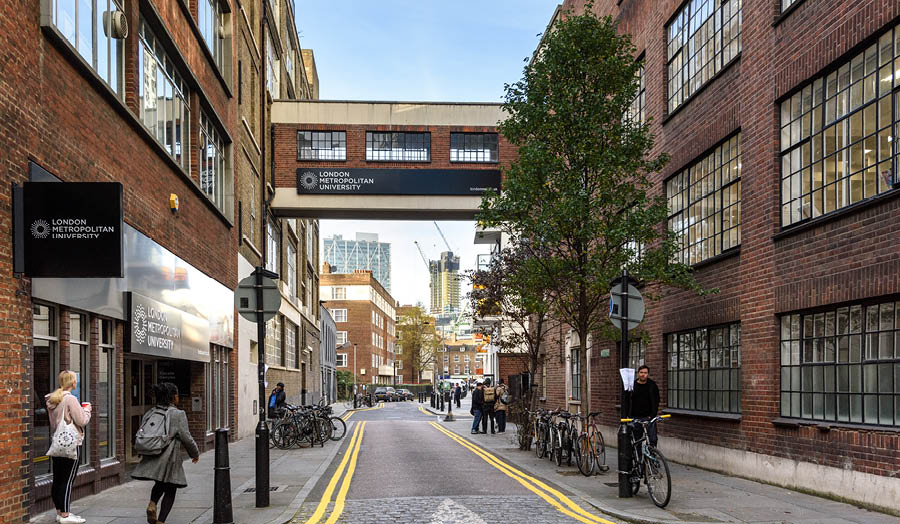
.jpg)
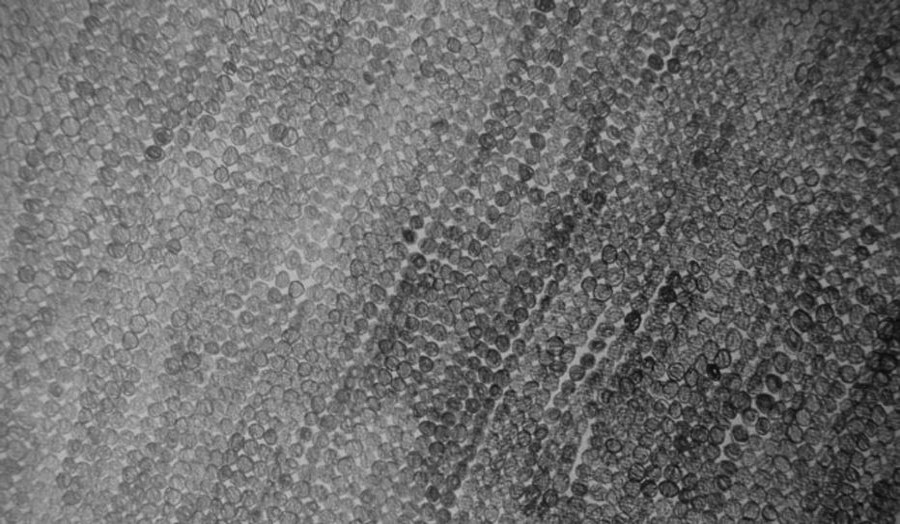
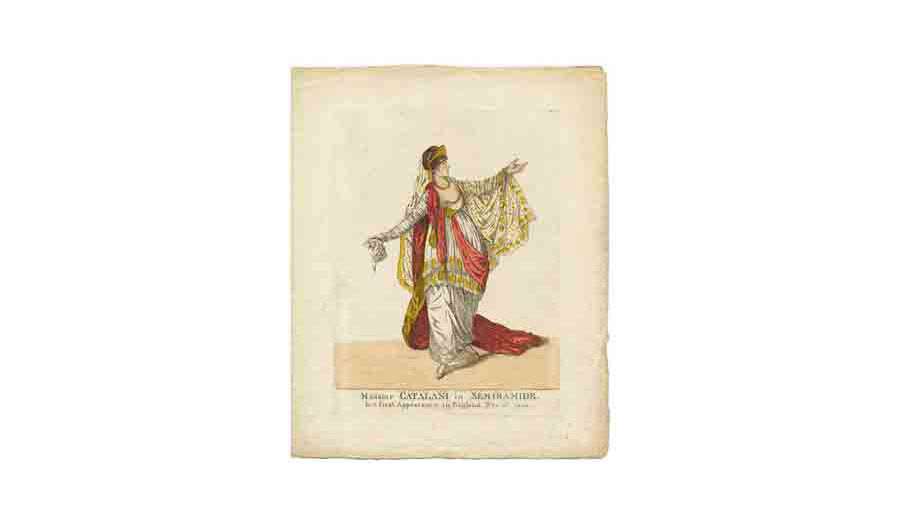
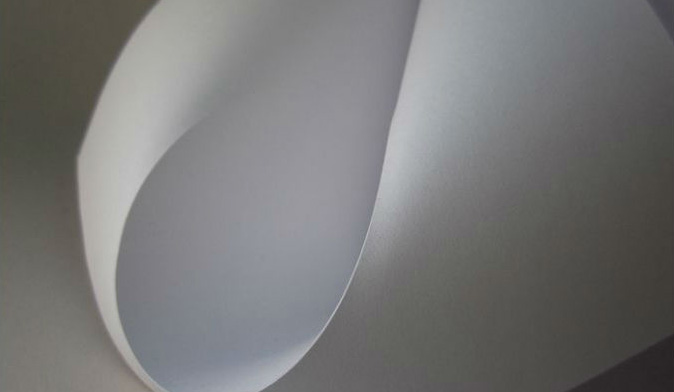
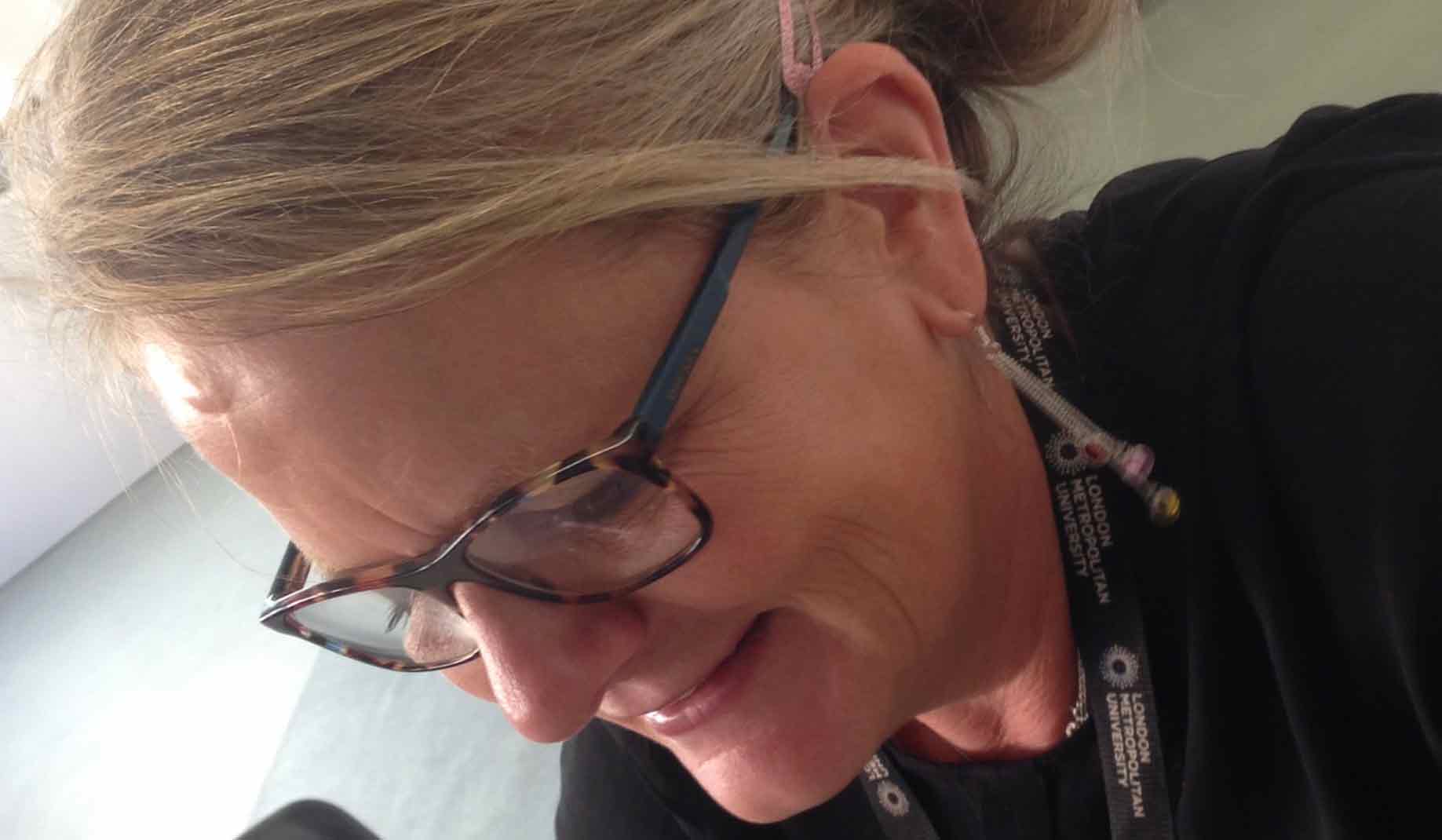
.jpg)
.jpg)
